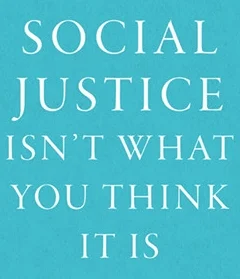Ethics as Worship - A Review
The very first question of the Westminster Shorter Catechism asks, “What is the chief end of man?”
The simple, but profound answer is, “Man’s chief end is to glorify God, and to enjoy him forever.”
In other words, the chief end of humankind is to worship God and delight in his goodness. But “to glorify God” or to worship means more than singing songs at the appointed time each week or having a daily quiet time. Rather, as Scripture makes clear, “Whatever you do, in word or in deed, do everything in the name of the Lord Jesus, giving thanks to God the Father through him.” (Col 3:17)
The sum of the life of the Christian should be to give God glory by living rightly unto him. This brings us to the place of ethics in the Christian life. Ethics is about worship—it’s about living rightly on earth according to God’s design and pointing others to his truth in righteousness.
Mark Liederbach and Evan Lenow bring the concept of worship through moral living to the forefront in their recent book, Ethics as Worship: The Pursuit of Moral Discipleship. The volume, which is a hefty tome of about 750 pages, presents the authors’ particular focus on the nature of ethics as well as providing much of the standard fare for an introductory ethics text.
This volume has some similarities to other ethics texts in that is explores particular ethical questions (especially those that are cultural pinch points) after surveying alternative approaches to ethics. This is a book that reflects significant research, taking into account the major voices in ethics in the past few decades, along with relevant technical data on questions like reproductive ethics. The arguments within the book are well-thought out, as they have been honed over combined decades of teaching by both authors.
The premise of ethics as worship is so basic that it seems obvious when it is introduced. As the authors explain, “Ethics is about God. It is about maximally adoring him and rendering to him all that he is due from all that he has made. And it is about our doing so both individually and corporately.” (xxi)
While this approach to ethics seems like it would go without saying, it is less often said in ethics texts (even those by orthodox, Christian authors) than is warranted. And, even among those purporting to do Christian ethics, there is often a failure to make God’s character and value the summum bonum.
Ethics as worship means that the Christian worldview is the beginning of the moral quest. The foundation of the Christian worldview is properly Scripture, which anchors the method and content in the reveal Word of God. But a purely “scriptural” ethic can lead to casuistry. After all, Scripture does not say that we cannot use cocaine or tell us precisely what to do about global warming. An alternative, which includes various forms of philosophical ethics attempts to get at truth apart from Scripture and then looks for passages that can illustrate. Still other forms of so-called Christian ethics are more like weather gauges that check the cultural climate and decide write and wrong to try to maintain respectability. Viewing ethics as worship puts God at the center, with Scripture as the foundation, and delight in God and holiness as primary signs of success.
Ethics as Worship is a thoroughly theological volume with a reformed outlook. Liederbach and Lenow see the call to worship beginning in the garden of Eden. Building on the somewhat esoteric work of John Sailhamer, they call for a retranslation of Genesis 2:15 as a call for humanity to “worship God and obey his commands” in paradise before the fall. This is a debatable claim, which has little support in common translations, but whether or not their translation option is correct, there is no question that obedience and worship were central to human purpose before sin came into the world. One need not to agree with this emphasis to see the value in the approach Lenow and Liederbach follow. After the fall, the priority of worship and obedience remained, but it was frustrated by the effects of sin. The authors continue to explore how worship is essential through the remaining phases of the universe: fall, redemption, and restoration.
This is a volume that adds to the field of ethics, especially among evangelicals, by effectively summarizing much of the literature of the field and offering a new emphasis for the moral task. It is not wholly foreign, but the emphasis being on worship rather than righteousness—the process of decision rather than the personal outcome—is refreshing and helpful in many ways.
Ethics as Worship could be used at the college or seminary level. It would be a useful pastoral reference, with up-to-date data on very important cultural debates. Thankfully, the authors tend to focus less on edge cases and so-called dilemmas than providing sound principles that can guide faithful moral decisions. There are several good ethics texts on the market, but this is another worthy one that deserves attention, adoption, and utilization.
NOTE: I was provided a gratis copy of this volume from the publisher with no expectation of a positive review.


































There’s no reason to doubt that Jesus was nailed to the cross. Ultimately, I trust what Scripture says about Jesus’s crucifixion because I also trust what it says about his resurrection. And that’s what we should be celebrating this week.